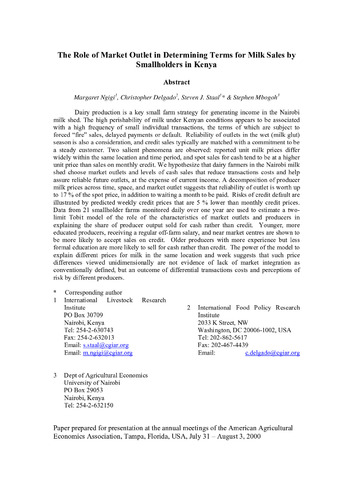The role of market outlet in determining terms for milk sales by smallholders in Kenya
Abstract
Dairy production is a key small farm strategy for generating income in the Nairobi milk shed. The high perishability of milk under Kenyan conditions appears to be associated with a high frequency of small individual transactions, the terms of which are subject to forced “fire” sales, delayed payments or default. Reliability of outlets in the wet (milk glut) season is also a consideration, and credit sales typically are matched with a commitment to be a steady customer. Two salient phenomena are observed: reported unit milk prices differ widely within the same location and time period, and spot sales for cash tend to be at a higher unit price than sales on monthly credit. We hypothesize that dairy farmers in the Nairobi milk shed choose market outlets and levels of cash sales that reduce transactions costs and help assure reliable future outlets, at the expense of current income. A decomposition of producer milk prices across time, space, and market outlet suggests that reliability of outlet is worth up to 17 % of the spot price, in addition to waiting a month to be paid. Risks of credit default are illustrated by predicted weekly credit prices that are 5 % lower than monthly credit prices. Data from 21 smallholder farms monitored daily over one year are used to estimate a two-limit Tobit model of the role of the characteristics of market outlets and producers in explaining the share of producer output sold for cash rather than credit. Younger, more educated producers, receiving a regular off-farm salary, and near market centres are shown to be more likely to accept sales on credit. Older producers with more experience but less formal education are more likely to sell for cash rather than credit. The power of the model to explain different prices for milk in the same location and week suggests that such price differences viewed unidimensionally are not evidence of lack of market integration as conventionally defined, but an outcome of differential transactions costs and perceptions of risk by different producers.

